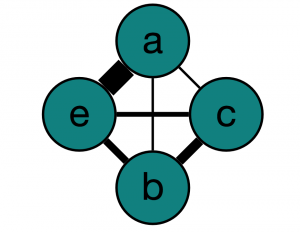Week 2 Progress Report
Week 2 was spent further looking into Bayesian Weighting Schemes and in particular how they were applied in a specific paper titled Top-Down Network Analysis to Drive Bottom-Up Modeling of Physiological Processes by Poirel et. al. This was the original LINKER paper that PATHLINKER was built upon. I also spent a very decent amount of time looking at other interactomes and curating a working list of interactomes and how they weight their interactomes. So far I have only done this in detail for the HIPPIE interactome but more work is still needed. Besides research, I also worked on a document about Bayesian Weighting that aims to elucidate some of the mathematical set up and notation for the paper mentioned above as it suffered from some convoluted mathematical notation. Hopefully, this will be useful to people trying to read this paper in the future. Other tasks involved debugging code, presenting learned material and sorting through papers to find relevant papers.

